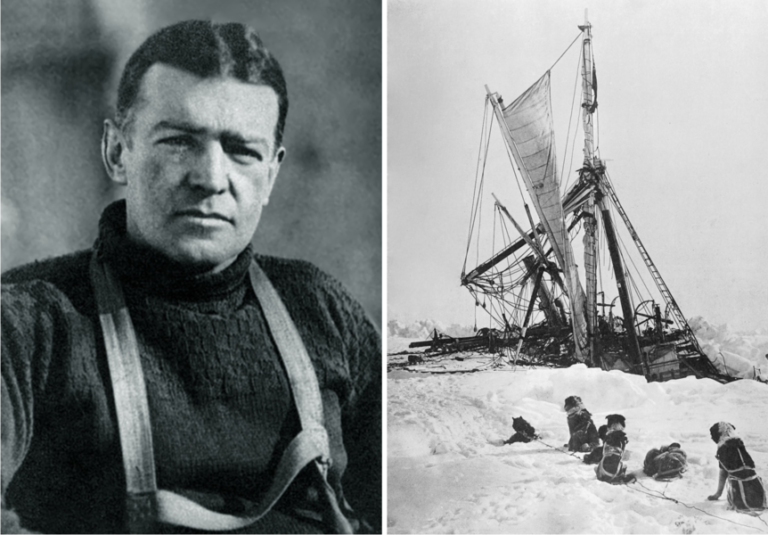
Leading in times of crisis: How healthy optimism works
Crises are as much a part of business as stormy weather at sea. But what if the storm lasts longer? 3 impulses for strong leadership in a crisis.

Inspiring goals that motivate your team to top performance: This is what the agile management method OKR promises. To get off to a successful start, everyone needs to internalize the basics. Perseverance is required, because the principles are not intuitive.
Some teams start with OKR full of enthusiasm. But then things don’t go as smoothly as they had hoped. The initial excitement soon fades.
Why does a team fail to achieve its goals? Often it is not the OKR principles, but technical subtleties.
To apply the method successfully, teams must master 5 challenges:
(To access one of the following sections directly, click on the subheading:)
Imagine the following scene: You have a business lunch date at a Japanese restaurant.
The waiter serves delicious sushi and everyone at the table routinely reaches for their chopsticks.
Would you be the only person to ask for cutlery? Because you’ve only eaten with a knife and fork all your life? You don’t want to embarrass yourself. You get through the meal tense and with a few mishaps. You can’t really enjoy it.
You resolve: “Next time I want to eat with chopsticks in a relaxed and accident-free way.”
What does this have to do with Objectives & Key Results (OKR)? Eating with chopsticks is perhaps a trivial challenge. But it is also a viable “objective”.
Formulating OKR goals is quite challenging. When you and your team take your first steps with OKR, it is quite normal that you need to practise the method.
And this starts with the question: Which goals are suitable for OKR? Many managers who are measured by KPIs associate targets with measurable variables.
You want to increase sales by 20% in the fourth quarter? That would be an ambitious target, but unsuitable as an objective in the sense of OKR.
Because at OKR:
This is where the difference between OKR goals and traditional business goals becomes tangible:
OKR inspire. And they address problems for which you do not yet have any solution routines.
Just like when you first try to eat with chopsticks. There are no tried and tested motor patterns that you can fall back on. All you need to do is try it out, recognize good and less good techniques and react to them.
Keep this example from everyday life in mind when formulating team goals. Always ask the group about the vision of the future: it is not just WHAT you want to achieve that is decisive, but the outstanding quality and impact of this goal.
How do customers develop effective OKR routines with us? Find out more in this video (click here).
Errors often creep into the key results at the beginning. Let’s take a look at a hypothetical example.
Let’s say you are responsible for global HR in a large company. As a team, you formulate an inspiring objective: in three months, you want to offer new colleagues around the world the best onboarding experience of their lives.
Now you need your key results, i.e. answers to the question: How do you achieve your objective?
This is not as simple as it seems. Think of a key result as a lever. Every movement of the lever brings you closer to your goal.
The following details are important here:
Example: You surveyed 100 employees who had received their onboarding in the past 12 months about their experiences.
Avoid vague formulations such as: You interviewed a focus group of employees.
Over time, you will be able to apply these rules confidently as a team without thinking twice.
Driving transformation, engaging employees. Feel free to contact us for an individual discussion of your challenge:
“Kill your darlings” is a great motto when setting OKR goals. There is a considerable risk in thinking as big as possible and making overly ambitious plans, especially when starting out.
This can affect your team, for example, if they are already used to a high workload and long to-do lists. In OKR mode, it is then easy for your colleagues to take on far too much and map all kinds of projects in OKR sets.
For example, if there are 7 objectives on your board, each with 5 key results, you should urgently prioritize further.
Only formulate up to 3 objectives per quarter, each with 3 key results.
This keeps the goals that are a priority for your team in day-to-day business manageable.
More than 3×3 OKR sets overwhelm even experienced groups. The result: lofty goals are missed, the team is frustrated and looks for the cause in the method itself.
OKR can make a noticeable difference to everyday working life. For your team to accept the method, the first steps are psychologically important. You can create the necessary sense of achievement with the 3×3 formula.
In arm wrestling, the biceps are decisive for success – in a cycling race, however, they are less important. If you spend too much time training arm strength as a professional cyclist, you won’t be at the front.
In sport, the wrong priorities are immediately obvious. In business, this is not always the case.
OKRs develop their power at the operational level. However, the individual teams must also use this power in line with the overarching strategy.
Typically, companies pursue their strategies for three years or longer. Without concrete interim targets , OKRs can miss the big strategic direction at working level.
To pick up the image again: Everyone in your team is happy about their strong arms, but your company is losing one bike race after another.
Objectives are like visions in miniature. In day-to-day business, they serve as a guiding star for a limited period of time, usually three months. It is advisable to set so-called mid-term goals, or MOALs for short. They are effectively the medium-term training goal:
Where should your division be in a year’s time in order to get closer to the strategy?
As is usual with OKRs, MOALs are also created in a process that involves several hierarchical levels. For example, in an annual workshop where department and team managers and employees develop annual targets together.
Formulate MOALs in a similar way to objectives: as inspiring images of the future, as short and memorable as possible. Here are three examples:
Sustainability: “Our company headquarters is a model of energy efficiency throughout Europe.”
Customer experience: “Our repair service is an unbeatable competitive advantage.”
The first steps with OKR often determine whether a team embraces the method and can improve its performance in the long term.
To ensure that everyone gets off to the right start and stays on the ball, you need someone in the team who has a firm grasp of the methods, manages the process and answers questions. In short, you need trained and motivated OKR coaches in your team. This does not necessarily have to be an external person.
Tasks and roles of the OKR coaches:
At the very beginning, the effort required for change and coaching is higher. But once the method has become established, an OKR coach needs significantly less time to support and motivate the team on a day-to-day basis.
What can you do if you have already tried OKR but problems keep creeping in?
We will be happy to review your progress and give you an assessment of how your team can move forward.

Crises are as much a part of business as stormy weather at sea. But what if the storm lasts longer? 3 impulses for strong leadership in a crisis.

He conveyed confidence in a desperate situation: British polar explorer Ernest Shackleton and his team survived a two-year battle for survival in the Southern Ocean. What can leaders learn from him in times of crisis?

Getting an IT project across hundreds of organizational units to the finish line? Our colleague Mathis takes a sporty approach. In our interview, he tells us what excites him about project management as a consultant and why he goes to the boxing ring to compensate.
2021 Grosse-Hornke